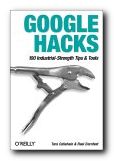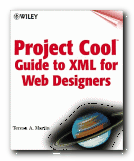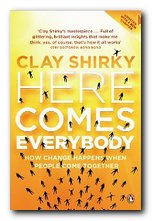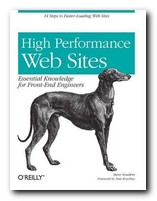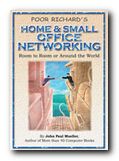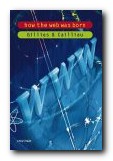The Economics of Abundance and Why Zero Pricing is Changing the Face of Business
FREE is Chris Anderson’s follow-up to his best-selling and very influential book The Long Tail. In his first book he discussed
the new shape of consumer demand, when everything is available and we can choose from the infinite aisle rather than just the best-seller bin. The abundant marketplace of the Long Tail was enabled by the unlimited ‘shelf space’ of the Internet, which is the first distribution system in history that is as well suited for the niche as for the mass
 This new book explores the logical consequences of the digital revolution in terms of storage space becoming virtually unlimited, the transfer of bits being more or less costless, and the new economic models of ecommerce driving the price of (some) products downwards. That is, down towards and including zero. he discusses all aspects of the term ‘free’. That’s free as in beer, speech, gifts, offers, and so on. How can an airline company afford to give away free flights, or a telephone company offer free mobile phones?
This new book explores the logical consequences of the digital revolution in terms of storage space becoming virtually unlimited, the transfer of bits being more or less costless, and the new economic models of ecommerce driving the price of (some) products downwards. That is, down towards and including zero. he discusses all aspects of the term ‘free’. That’s free as in beer, speech, gifts, offers, and so on. How can an airline company afford to give away free flights, or a telephone company offer free mobile phones?
The answer is that they make their profits selling peripheral services – such as an expensive in-flight coffee or premium call charges. At first it seems to be a contradictory, topsy-turvy world, but the closer you look at the details and take note of the implementations, the more sense it makes.
His approach is thorough. He looks at the history of ‘Free’ (which goes back further than you might think) and then presents recent examples which illustrate the fact that when a price gets low enough, collecting the income from it may not be worthwhile, and you might make more money by giving it away. In fact many companies make a profit precisely because they offer a free version of their products alongside a ‘paid-for’ version. He cites the example of an open source hardware company:
This is why Free works so well in conjunction with Paid. It can accommodate the varying psychologies of a range of consumers, from those who have more time than money to those who have more money than time. It can work for those who are confident in their skills and want to do it themselves, and for those who aren’t and want somebody to do it for them. Free plus Paid can span the full psychology of consumerism.
There are a couple of in-depth case studies. One shows how Microsoft first ignored then was forced to face up to the threat posed by Linux open source operating systems. Microsoft has now developed its own open source research centre. The other is a pure case of storage costing that shows how Yahoo beat off the threat of Google G-Mail by offering even greater amounts of free space for storing emails.
I was glad to see that in a chapter on new media and new models of distribution he included the traditional printed book. Sure enough, his own book FREE is available gratis as an online download, but like most readers, I was prepared to pay for a printed version I could read by the pool.
The other examples he offers provide fascinating glimpses into the new economics of new media. Musicians such as Radiohead and Prince gave away the whole contents of their latest CDs, but in the end they made record-breaking profits – from concert performances or special editions and deluxe box sets of the same CDs.
He even makes out a reasonable case for piracy in China and Brazil. Western musicians might not agree, but local artists tolerate it because it acts as a form of free publicity : they make their money on concert appearances and sales from merchandising.
He also refutes all the common objections to the case he is making – such as ‘There’s no such thing as a free lunch’, and ‘No cost = No value’. The fact is that the lunch may be paid for by somebody else in exchange for your attention, and the ‘No cost = No value’ argument is completely refuted by the examples of Google and Wikipedia – both free and both highly valued.
But haven’t many people tried to make money from Free, and failed? Yes – they have. And it’s to Anderson’s credit that he looks in detail at the examples which appear to disprove his thesis. But he points to flaws in their economic models and explains why they failed.
Finally, just to drive his points home, he offers checklists of principles to work by, and a list of fifty examples of business models built on Free – all concentrated in his refreshingly cryptic style:
- Give away the show, and sell the drinks (strip clubs)
- Give away the drinks, and sell the show (casinos)
It’s important to realise that most of his arguments are heavily related to bits, not atoms. Digital products have a tendency to become free, whereas physical objects do not. Motor cars and refrigerators are not likely to be free for a long time yet, but software and online content is definitely heading that way. It will be interesting to see if Rupert Murdoch’s plans to charge for online newspapers will work. I suspect it won’t. But then, what do I know – I’m not an international media multi-millionaire.
© Roy Johnson 2009
![]() Buy the book at Amazon UK
Buy the book at Amazon UK
![]() Buy the book at Amazon US
Buy the book at Amazon US
Chris Anderson, FREE: The Future of a Radical Price: The Economics of Abundance and Why Zero Pricing is Changing the Face of Business , London: Random House, 2009, pp.274, ISBN: 1905211481
More on eCommerce
More on media
More on publishing
More on technology

